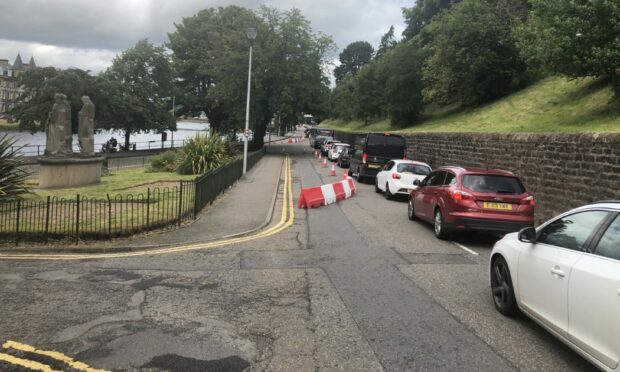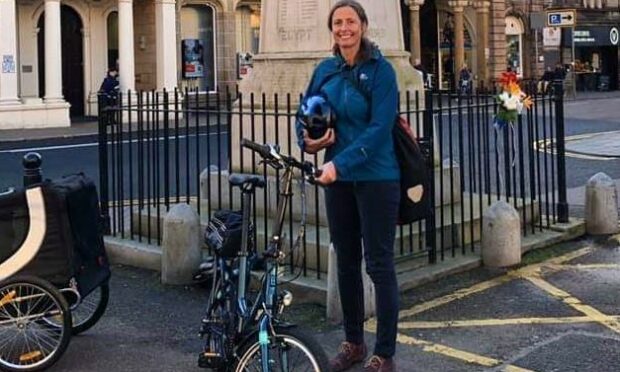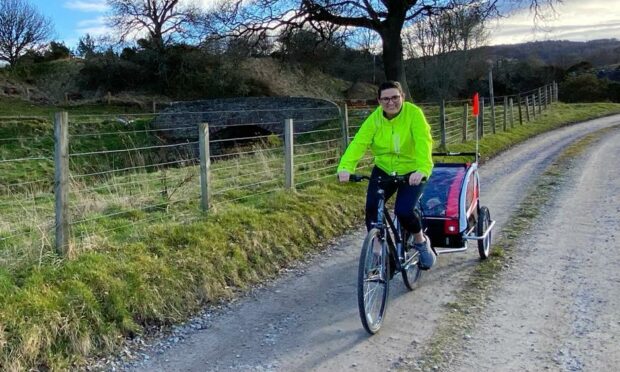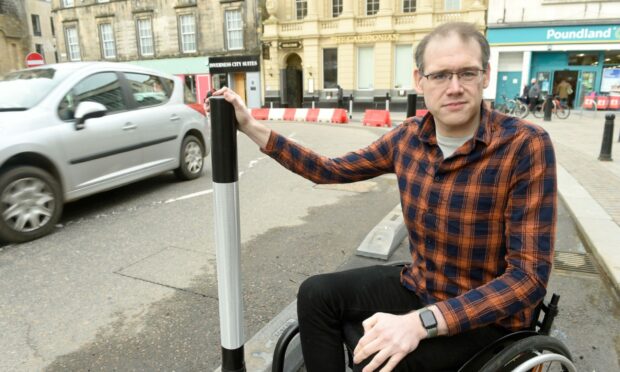A lasting side effect of the Covid pandemic is the change Spaces for People has brought to Inverness city centre.
The measures to assist social distancing have altered driving routes to extend areas for walkers, cyclists and wheelchair users.
But as lockdown restrictions continue to ease, should the bike lanes, one-way systems and pavement widening be scrapped?
Or should they be kept to make centres more attractive to non-car users and to help tackle climate change?
A pivotal moment for Inverness?
Highland Council’s Inverness area committee will discuss the issue tomorrow at what officials call a “pivotal moment” for the city centre.
A 3,000-signature petition calls for councillors to undo the changes.
Another petition with more than 700 names urges the measures to be kept, but improved.
Spaces for People measures are being removed from Aberdeen streets.
They were unpopular with many businesses and councillors agreed to remove them following recommendations from NHS Grampian.
But a report from Highland Council officials recommends retaining the measures in Academy Street, Riverside Way and Castle Street.
It suggests altering the Millburn Road scheme to retain some of the temporary changes.
The report says improving active travel opportunities will help tackle transport poverty and reduce the council’s carbon footprint.
It warns the authority faces a “reputational risk” by not retaining the measures given their improvement to sustainable travel.
The case for retaining and improving Spaces for People measures
The report recommends the Spaces for People legacy is considered in the context of creating a high-quality, safe and attractive city centre supporting a broad mix of uses.
It says there is no evidence of unacceptable impacts as a result of the measures.
A petition from the Highland Healthcare for Climate Action group supports retaining and improving the changes.
It says councillors have a civic responsibility to grasp the importance of the climate crisis.
The group wants it made easier for people to walk, wheel and cycle rather than drive for short journeys.
“This is not only an essential step to mitigate the environmental crisis, but also a well proven solution to many health problems, and therefore beneficial to our health system as well.”
While action will lead to “difficult and unpopular decisions”, it says “we cannot afford to waste time in going backwards”.
The solution is not to remove but to improve.”
Highland Healthcare for Climate Action
It believes the existing measures fall far short of providing safe and effective journeys into and across the city.
“However, the solution is not to remove but to improve.
Time to think big?
“We’ve actually got a long way to go before people can make an effective transition from cars to public transport or walking, wheeling and cycling safely.
“We are already behind the curve. There is no time for timid decisions.”
Local GP Dr Katie Walter, a member of the group, urges councillors to take expert advice before making changes.
She said: “Let’s think big. Let’s help those who cannot see the horizon ahead to realise that short-term decision-making is not the solution here.
“I’m sure we can all live with a few ugly bollards a little while longer to ensure we make the right decisions.”
With Covid levels remaining high, she believes it is not the time to remove social distancing measures.
Kat Heath, who cycles from Bunchrew to Inverness with her six-month-old baby, is grateful for the segregated cycle lanes.
“There is definitely room for improving and making them safer.
“But from a mum who does all her small journeys by bike I promise they keep me and my son safer.”
The arguments for scrapping Spaces for People
Local businessman Donald Mackenzie, who is also a cyclist, is behind the petition against the measures.
He said: “Just because you are pro-bike doesn’t mean you should accept the nonsense that is currently being put forward.
“It’s perfectly legitimate to say we need to do more for cycling.
“But you don’t accept a bad scheme because it’s sort of in the right direction.
“This scheme was rushed in and it shows. We should not be starting from such a flawed layout.
“They should get rid of what they’ve got, return us to where we were and then start to actually plan, preferably with a genuine consultation.”
He supports better facilities for cyclists and more education for drivers about cycling rights.
Mr Mackenzie added: “We should be making the roads completely safe for cycles.
“But we cannot do it in an old town setting like Inverness without causing other problems elsewhere.
“We need to get a balance and the balance is wrong when we’ve done this daft scheme.”
Councillor Andrew Jarvie, who tested the measures in his wheelchair, said he could see no reason to justify their existence.
He said they have discouraged cycling and led to traffic queues.
This scheme was rushed in and it shows.”
Donald Mackenzie
“To scrap the whole thing is the only way. Change is healthy but it has to be the right change.
“Nothing you bring in that substantially changes infrastructure is going to be perfect.
‘Back to the drawing board’
“But when it’s been a comprehensive failure that has not met a single objective it sought to meet at the start, it’s time to say ‘No, we need to scrap it and go back to the drawing board.”
Mr Jarvie, who has previously criticised the measures, added: “While there needs to be a shift away from cars to active travel, fundamentally you will not get people who currently drive to start cycling if, first of all, you get them hating cyclists.”
Stewart Nicol, chief executive of Inverness Chamber of Commerce, said businesses, public and community bodies and residents need to discuss future measures to ensure they are successful and enduring.
He asserts the Spaces for People arrangements were hurriedly put in place in response to the unfolding pandemic.
He said: “Most of the current measures look as if that was the case.
“As such, they are just not appropriate for either motorists or pedestrians.”
He believes a limited extension of the temporary measures would be acceptable as the impact of the pandemic is managed.
But long-term measures need to be done to a style and standard which enhances the look of the city.





